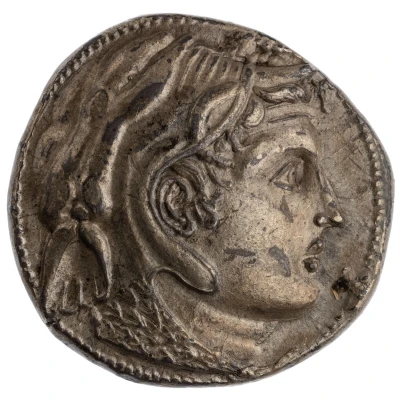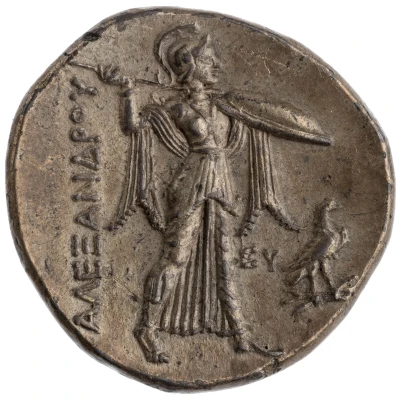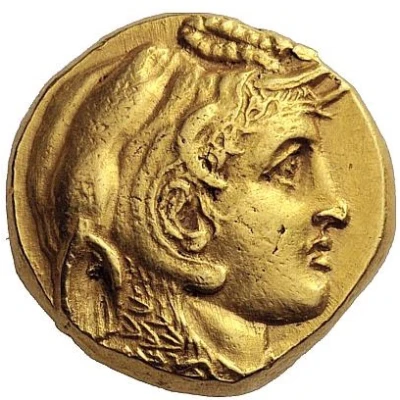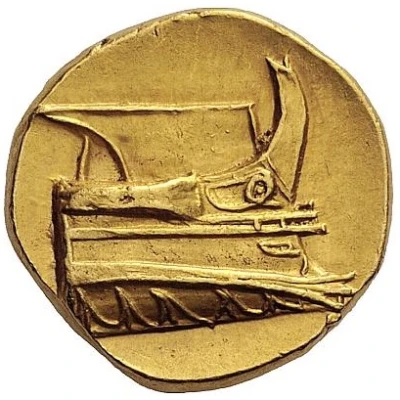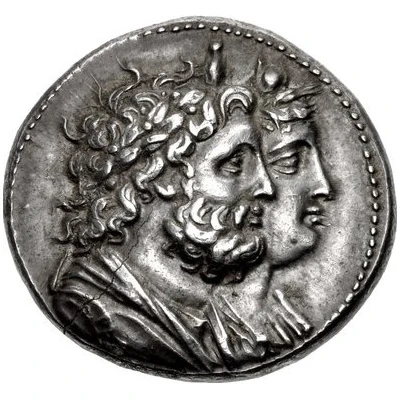


© Classical Numismatic Group, Inc.
Tetradrachm - Ptolemy IV Philopator Alexandreia; Battle of Raphia 217 BC - 210 BC
| Silver | 14.0 g | 27 mm |
| Issuer | Ptolemaic Kingdom (Ptolemaic Kingdom (305 BC - 30 BC)) |
|---|---|
| King | Ptolemy IV Philopator (221 BC - 203 BC) |
| Type | Circulating commemorative coin |
| Years | 217 BC - 210 BC |
| Value | Tetradrachm (4) |
| Currency | Attic drachm (circa 323 – 306 BC) |
| Composition | Silver |
| Weight | 14.0 g |
| Diameter | 27 mm |
| Shape | Round (irregular) |
| Technique | Hammered |
| Orientation | Medal alignment ↑↑ |
| Demonetized | Yes |
| Updated | 2024-10-09 |
| Numista | N#124575 |
|---|---|
| Rarity index | 97% |
Reverse
Eagle with closed wings standing left on thunderbolt, looking right, holding double cornucopiae bound with royal diadem over shoulder.
Script: Greek
Lettering:
ΒΑΣΙΛΕΩΣ ΠΤΟΛΕΜΑΙΟΥ
ΔΙ
Translation: King Ptolemy
Comment
This type is thought to have been issued in celebration of the Ptolemaic victory over the Seleukids at the battle of Raphia during the Fourth Syrian War. Official propaganda proclaimed that these two deities, Serapis and Isis, had intervened on the behalf of the Egyptians, saving them from defeat (see C. Lorber, “The Ptolemaic Era Coinage Revisited,” NC 2007, p. 116, and L. Bricault, “Serapis et Isis, Sauveurs de Ptolémé IV à Raphia,” Chronique d’Égypte LXXIV (1999), pp. 334-43).Landvatter 1-27 (unlisted dies); Noeske 139
Interesting fact
One interesting fact about this coin is that it was minted to commemorate the victory of Ptolemy IV Philopator over Antiochus III the Great in the Battle of Raphia in 217 BC. The coin features an image of Ptolemy IV on one side and a depiction of the goddess Athena on the other, symbolizing the power and influence of the Ptolemaic Kingdom at the time.
